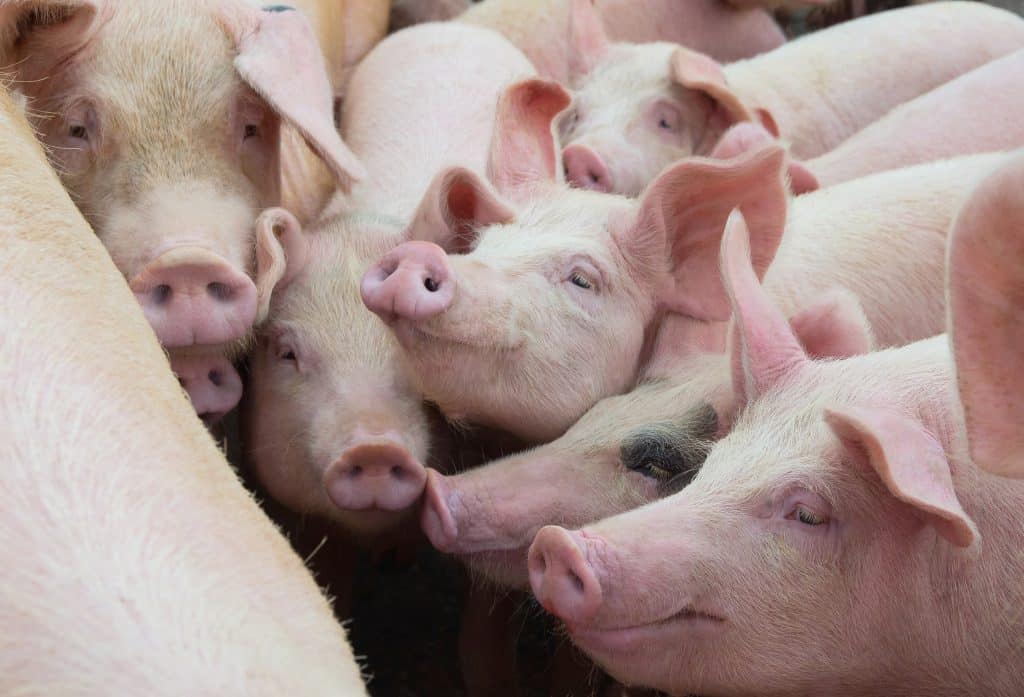Gastric ulcers in swine are a serious and an underestimated issue causing numerous implications for the health, welfare, and productivity of the herd. Gastric ulcers can have a significant performance impact on both the growing herd and sow herd, causing decreased feed intake, reduced growth rate, poor body condition, discomfort, and mortality. In this article we will explore the importance of management of gastric ulcers in swine.
Pathophysiology
Gastric ulcers are painful lesions that occur in the lining of the upper part of the stomach (pars oesophagea). Because this region is non-glandular, it lacks protective mucus, making it vulnerable to acid (low pH) and enzymes, causing chronic pain and discomfort to the pig. The severity of gross pathological lesions can be assigned to different grades, commonly grade 0 (no lesions), grade 1 (parakeratosis), grade 2 (erosion), grade 3 (gastric ulceration without stenosis), or grade 4 (gastric ulceration with stenosis). Early signs of gastric ulcer onset include pale skin, teeth grinding, poor appetite, and flank biting, while late signs include black faeces, anaemic appearance, lethargy, and death.

Reference: Peralvo-Vidal, et al. 2021. Risk factors for gastric ulceration in nursery
pigs. Journal of Preventive Veterinary Medicine, 189.
Management of gastric ulcers
Managing gastric ulcers involves a combination of preventive measures and treatment strategies. These include, among others, feed form management, nutritional adjustments, stress prevention, and overall pig health maintenance.
Feed form
Feed particle size: Increasing the average particle size of the feed by using more coarsely ground raw materials slows the movement of feed particles through the stomach. The slower passage reduces the exposure of the pars oesophagea to low pH levels for prolonged periods, helping to prevent irritation, inflammation, and ultimately, the formation of gastric ulcers.
Feeding strategies
Restricted feeding versus unrestricted feeding: Restricted feeding leads to periods when the stomach is empty, increasing the risk of ulcer development. In contrast, unrestricted or ad libitum feeding results in a
lower exposure to acidity in the stomach.
Fibre inclusion: Increasing the fibre content of the diet is an effective method to delay gastric emptying, which creates a physical barrier against stomach acid.
Feed buffering products: Certain feed additives on the market, when formulated into the diet, help neutralise stomach acid, preventing the formation and severity of ulcers.
Management factors
Stress management: An increase in stress causes an increase in acid secretion. Several major stressors such as transporting pigs, mixing pigs, and overcrowding can predispose them to developing stomach ulcers.
Environmental control: A comfortable environment with stable temperatures, low noise, and calm handling can lower stress-related stomach ulcers.
Avoid long fasting intervals: Manage feed supply to ensure feed is available at all times, preventing complete gastric emptying and reducing the risk of acid contact with the stomach lining. Feed management is especially important before and after transporting or moving pigs.
Water availability: Ensure clean, fresh water is always available to support digestion.
Pig health management
Veterinarian: It is important to work closely with your veterinarian to prevent disease and maintain the health of your pigs. Helicobacter suis is a zoonotic bacterium normally present in the stomach of pigs and has been found to play a role in ulcer formation. Helicobacter pylori is another bacterium that can be present in pigs; it is important to discuss with your veterinarian the management of these organisms.
Conclusion
Gastric ulcers are a preventable disease affecting both the growing herd and sow herd. Discuss potential mitigation strategies with your nutritionist and veterinarian that include a multifaceted approach using proven feeding strategies, practical decision-making, and a well-controlled environment for the pigs.
References are available upon request
Speak to one of our technical advisors for advice on how to implement solutions that will work for you.




